
Compared to general-purpose steel plate, high-tensile-strength steel plate has low shape formability , which makes it hard to process with conventional methods. Sankei developed a new forming technology using servomotor-control press systems. With this technology, it is possible to process sheet steel with a high tensile strength in the 980Mpa range, which provides for weight reduction in automobiles. Furthermore, building on the know-how we have accumulated thus far, we have developed design methods utilizing the latest CAD/CAM and forming simulation technologies integrated with die-making machine tools capable of achieving high precision, to achieve high-accuracy die-making techniques that enable fabrication of extremely precise metal dies. We will continue our work on the development of forming technologies and machine tools that can take advantage of steel plate with even higher tensile strength.
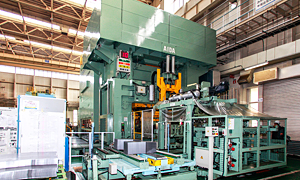
1000-ton servo press
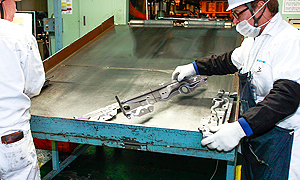
Automobile body parts
Sankei is pursuing a range of efforts to reduce weight for improved automobile fuel mileage. For example, in exhaust systems, by making use of technologies to analyze noise, fluid flow, and structure, it is possible to develop an optimal design on the computer. For plastic parts, with fluid analysis of plastic injection molding, we can design products with thinner walls in complex geometries. The supporting base that makes this possible is our die technology and equipment. The next hurdle in achieving thinner gauge sheet metal parts is welding. As the material used becomes thinner, welding becomes much more difficult. By utilizing laser welding, which in principle adds no weight, not to mention MIG and TIG welding, Sankei is making it possible to weld thin-gauge plate.
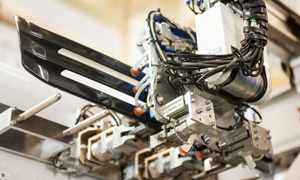
Injection molding (front grille, before painting)
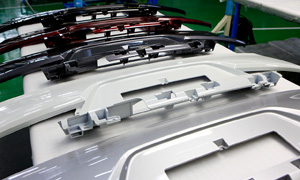
Injection molding (rear license garnish, after painting)
The theme of weight reduction is not limited to automotive industry. While motorcycles have fewer parts and are lighter overall compared to automobiles, efforts to reduce weight at the basic material level are absolutely essential. One good example is pure titanium. It has approximately half the specific gravity of stainless steel, but its coefficient of expansion can be limited to roughly half as much, and because of its good corrosion resistance and workability, it is used for high-performance motorcycle mufflers. Despite its superior physical properties, titanium has the disadvantage of being susceptible to embrittlement if oxygen, nitrogen, or hydrogen in the atmosphere react with it during welding. To prevent this, Sankei uses a technique of continuously spraying the weld area with argon gas, so as to shield it from the atmosphere. For motorcycles, we are also working on many other parts made from aluminum with high thermal conductivity.
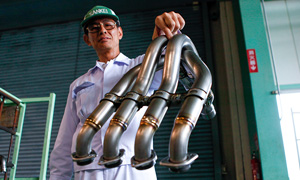
Reduced-weight titanium exhaust pipes
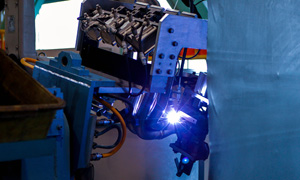
Titanium welding
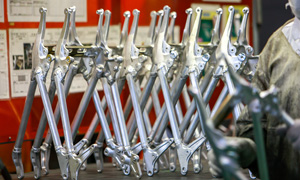
Aluminum motorcycle frame
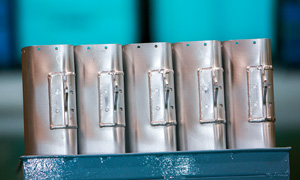
Aluminum motorcycle muffler (housing)